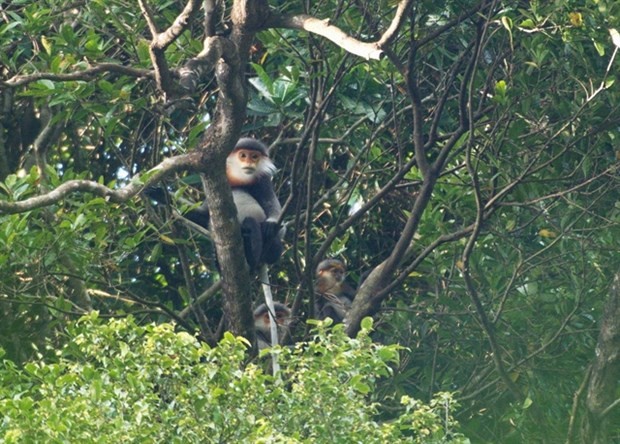
Meeting helps finalise strategy for species conservation
Latest
 |
| Meeting helps finalise strategy for species conservation: Grey-shanked douc langurs in Hon Do mountain area, Quang Nam province. (Photo: VNA) |
The event aims to call for the engagement of stakeholders in efforts to preserve endangered species and propose solutions to effectively and sustainably mobilise resources for biodiversity conservation and population recovery of wild species in Vietnam.
In his opening speech, Nguyen Thi Van Anh, coordinator of the project “Strengthening Partnerships to Protect Endangered Wildlife in Vietnam”, said biodiversity losses are still a huge challenge, requiring the joint efforts of the whole community, including the State, social organisations, people and businesses.
Vietnam needs to take stronger actions to prevent the degradation of natural ecosystems and endangered and endemic species, she stressed, adding that a concrete and long-term strategy will prevent poaching, trapping and illicit trade of wildlife, and help restore habitats that have suffered.
According to Dr. Nguyen Manh Ha, Director of the Centre for Nature Conservation and Development, natural forests, which are home to many species of precious and rare wild animals and plants, are the most affected habitats by degradation.
Additionally, unrestricted exploitation is the reason why many plant and animal species in Vietnam are in danger of extinction, he said.
Ha underlined the necessity to strictly abide by international conventions, laws, strategies and national plans in order to build effective strategies for attracting the involvement of stakeholders in conserving endangered, precious and rare wild species.
A multidisciplinary approach to management, conservation and restoration of biodiversity is also needed.
At the meeting, delegates discussed limitations and shortcomings related to financial resources and incentive policies for managing and conserving precious and rare wild species, investment in conservation projects, and human resources.
They proposed a number of priority activities to mobilise more resources as well as measures to ensure the effectiveness of the work.

















